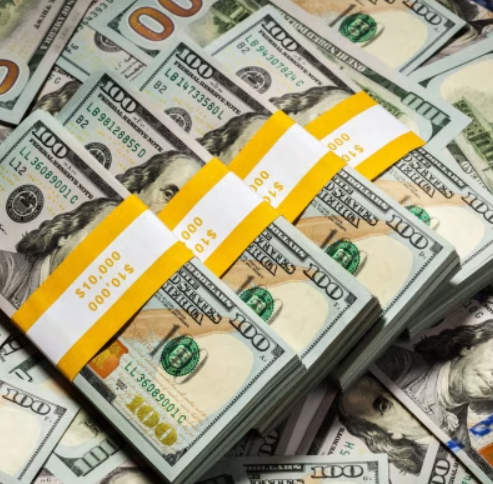
The U.S. Dollar: A Global Economic Powerhouse
The U.S. dollar is the backbone of the global financial system, playing a crucial role in international trade, investments, and economic policy. As the world’s primary reserve currency, the dollar is widely held by foreign central banks and financial institutions, making it a dominant force in global economics.
The Role of the U.S. Dollar in the Global Economy
As the preferred currency for international trade, the U.S. dollar is central to how the world conducts business. It is not only used for cross-border transactions but also serves as the primary currency for foreign exchange reserves. In fact, the dollar accounts for approximately 58% of the world’s total foreign exchange reserves, making it the most widely held reserve currency.
Foreign governments and major financial entities keep substantial reserves of U.S. dollars to facilitate trade, manage national debts, and stabilize their economies. This reliance on the dollar gives the U.S. a unique economic advantage, offering protection against domestic currency volatility and inflation.
The Dollar’s Ascendancy as the World’s Reserve Currency
The U.S. dollar’s rise to prominence began after World War II, when the International Monetary Fund (IMF) was established in 1944 with the goal of maintaining a currency exchange system centered around the dollar and gold. Over time, as the U.S. emerged as an economic superpower, the dollar became the preferred currency for global trade, investments, and financial reserves.
Several factors contribute to a currency’s global reserve status. These include the size and influence of the country’s economy, the depth and openness of its financial markets, and the convertibility of its currency. The U.S. dollar satisfies all these criteria, reinforcing its position as the world’s dominant reserve currency.
The Dollar as a Safe-Haven Currency
In times of economic instability, the U.S. dollar is often seen as a “safe-haven” currency. Investors flock to the dollar when geopolitical tensions rise or markets face turbulence, as the dollar tends to retain its value during such periods. This stability is backed by the political stability, strong economy, and deep financial markets of the United States.
The dollar’s safe-haven status enhances America’s ability to impose economic sanctions, as many international transactions are conducted through U.S.-based financial institutions. This gives the U.S. government a powerful tool to influence global affairs.
Challenges to the U.S. Dollar’s Dominance
While the dollar remains the world’s primary reserve currency, it is not without challengers. Some countries, like Russia and China, have actively sought alternatives to reduce their dependency on the dollar. Russia, for instance, has increased its gold reserves and diversified its currency holdings, including adding renminbi (the Chinese yuan) to its reserves. These efforts are part of a broader attempt to hedge against the potential use of dollar-based sanctions.
Furthermore, the BRICS nations (Brazil, Russia, India, China, and South Africa) have explored alternatives to the U.S. dollar, including the possibility of creating a shared currency. However, despite these efforts, no viable alternatives have emerged to challenge the dollar’s dominant role in global finance.
The U.S. Dollar in Global Trade
The U.S. dollar plays a critical role in global trade, as many commodities, such as oil, natural gas, and metals, are priced in dollars. This gives the U.S. an advantageous position in global markets, as the dollar’s value fluctuations directly impact international trade dynamics.
When the dollar strengthens against other currencies, U.S. consumers benefit from lower costs for imported goods, but U.S. exporters may face challenges as their products become more expensive in foreign markets. Conversely, when the dollar weakens, U.S. exports become more competitive, but American consumers may experience higher prices for imported goods, and international travel becomes more expensive for U.S. residents.
Impact of Currency Fluctuations on Investments
Fluctuations in the value of the U.S. dollar can significantly affect investment portfolios. For instance, a stronger dollar can reduce the profitability of U.S. companies that rely heavily on international sales, as foreign revenue will be worth less when converted into dollars. Similarly, U.S. investors holding international assets may see their returns impacted by changes in currency exchange rates, as foreign stocks are priced in local currencies but converted back into U.S. dollars for performance measurement.
Conclusion
The U.S. dollar’s status as the world’s leading reserve currency is not only a reflection of America’s economic power but also an essential element in the global financial system. While challenges to its dominance exist, the dollar continues to be the preferred choice for international trade, investment, and reserves. Understanding the U.S. dollar’s role and its impact on the global economy is vital for investors and policymakers alike.